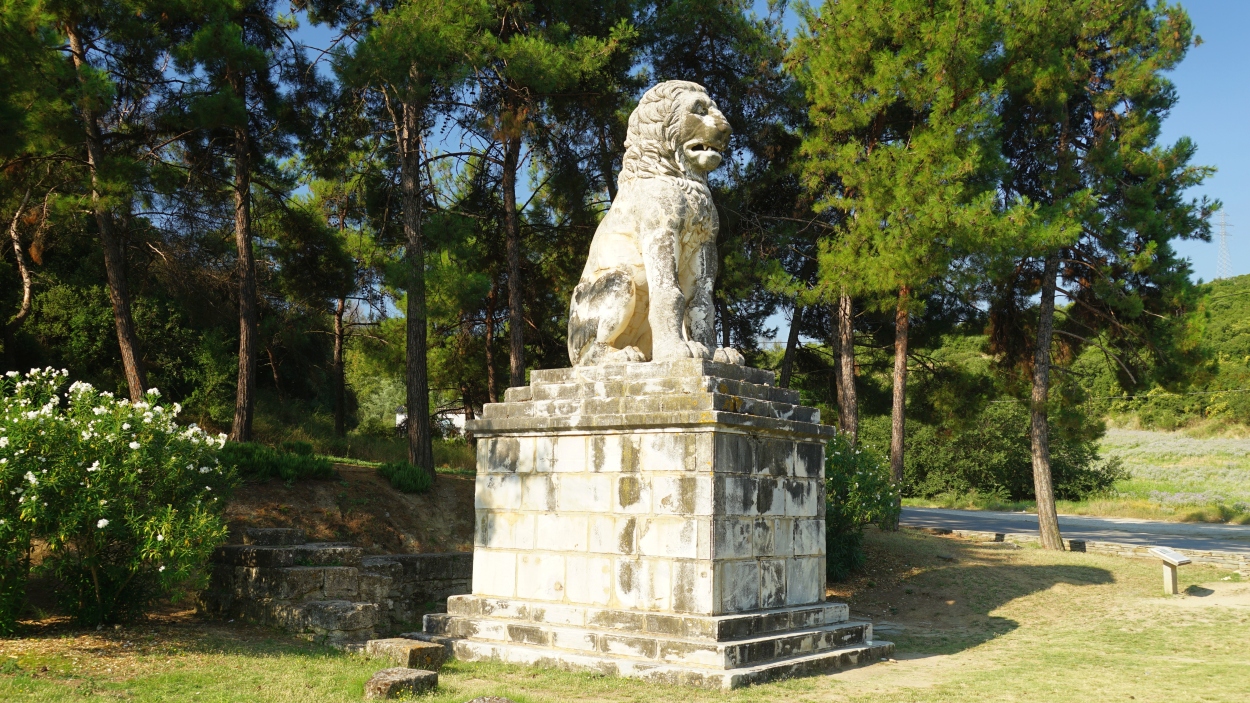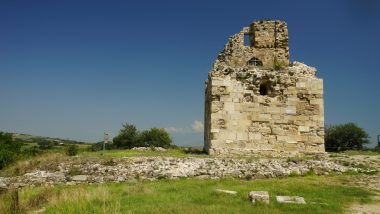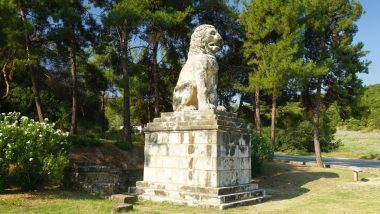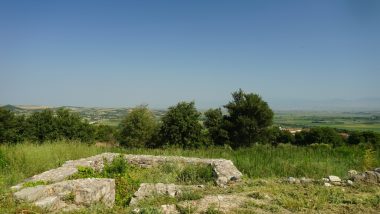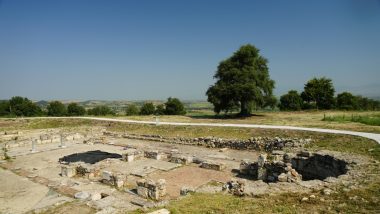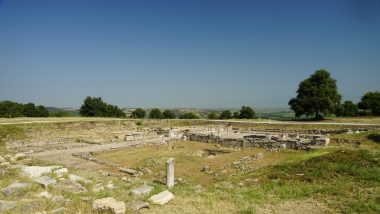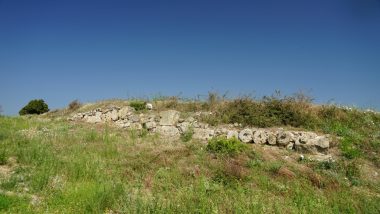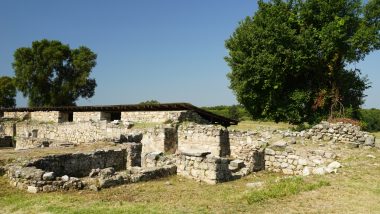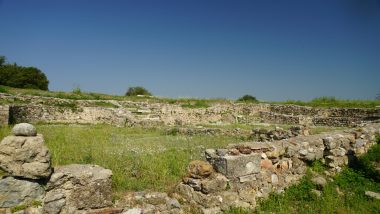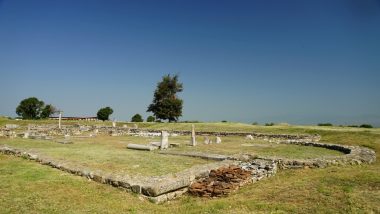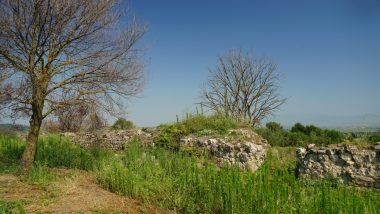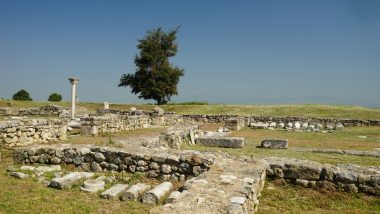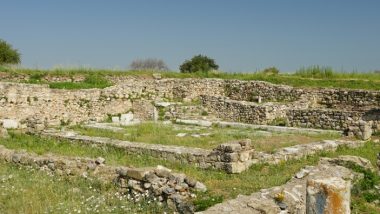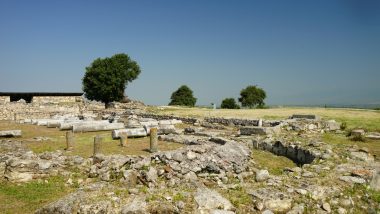We visited Amphipolis archeological site, an ancient Greek city on the Strymon River, located about five kilometers from the Aegean Sea. It was a strategic transportation center, it controlled the bridge over the Strymon and the route from northern Greece to the Hellespont, including the western approach to the timber, gold, and silver of Mount Pangaeum in Thrace. Originally a Thracian town, it was colonized by Athens in 437–436 BC. The Spartan Brasidas seized it in 424 and defeated the Athenian Cleon, who tried to recapture it in 422. It was officially returned to Athens by the Peace of Nicias (421) but actually remained independent, despite Athenian attempts to regain control (416 and 368–365). Philip II of Macedonia occupied it in 357, and it remained under Macedonian control until 168 when Rome made it a free city and the headquarters of the Roman governor of Macedonia. The well-curated museum in the village shows artifacts from the Athenian colony of Amphipolis and its surrounding area, from 5000 BC through the city’s Classical, Hellenistic, Roman and Byzantine periods. Displays range from neolithic figures to twinkling gold jewelry, plus an exhibit showing pictures of the dramatic excavation of the Amphipolis Lion.
Parking location – Amphipolis: 40.820180N 23.845065E


